The device of the most important engineering system: options for heating a two-story house
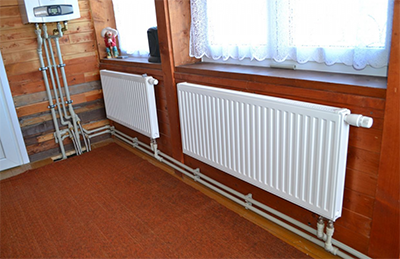
Heating - one of the main communication complexes in any building, including a two-story private house.
It ensures the maintenance of a comfortable temperature in the premises, reduces heat loss, and is also important for the safety of the building itself and finishing materials.
In general, a heating system is necessary to distribute heat from the source to consumers.
Water heating of a two-story house
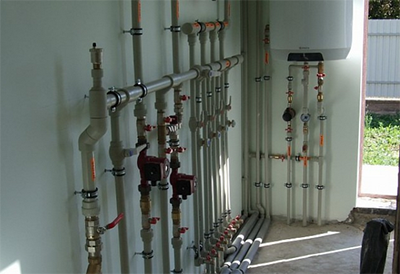
In these systems liquid water is used as a heat carrier (or antifreeze water-based, to prevent damage in case of frost).
The liquid is heated in the boiler, moves through the pipes to the radiators, gives off heat to the room and returns to the boiler, which means that the system operates in a closed mode.
By circulation method water such systems are classified by two types: with natural and forced circulation.
Natural circulation system
In this version, a heat carrier is used to move through the pipes. the difference in density between hot and cold water. Heating up in the boiler, the water itself rises through the pipes, passes through the radiators, cools down in them, and flows down into the boiler. An open expansion tank makes it possible compensate for pressure surges and release air from the system when starting it.
Regardless of the layout, it is necessary to pay attention to the installation locations of the boiler and expansion tank. The boiler should be located at the lowest point of the system, if possible below the radiators, and the tank - at the highest (for example, in the attic). In addition, to allow water to flow by gravity, horizontal sections of pipes are laid with a slope 5–7 degrees.
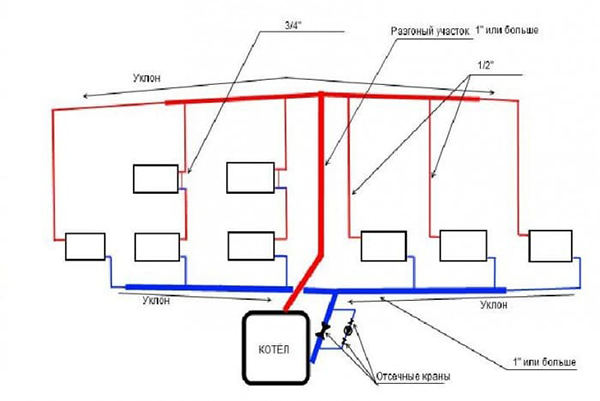
Photo 1. Diagram of a heating system with natural circulation, the boiler is located at the lowest point of the house.
Among the wiring diagrams, the following are distinguished: one-pipe and two-pipe. In the first — radiators are connected in parallel to one pipe, which goes around the entire building in a ring. Second — implies the presence of two circuits with hot and cold water. Hot water is supplied to the radiators from above, and cooled water comes out from below and goes to the boiler.
Attention! Due to the small pressure difference, the radius of the heating circuit in a natural circulation system should not exceed 30 meters, otherwise uneven heating or complete system shutdown due to insufficient pressure is possible.
The cost of such a system depends on the area of the house, heat loss, class of equipment. For example, the price of one radiator varies from 2 to 20 thousand rubles. Average cost of equipment for a house of area 180 m2 makes up 150 thousand rubles., and the installation of such a system is 90 thousand rubles.
Forced by means of a pump
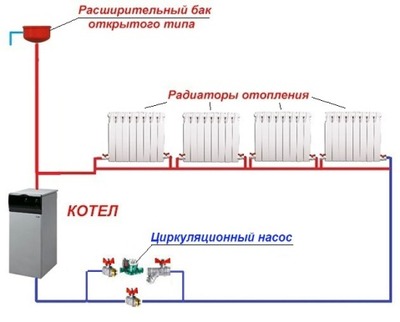
The main difference from the previous system is the presence of a circulation pump.
The device is installed in front of the boiler and significantly increases the efficiency and convenience of using such heating:
- there is no need to lay pipes at an angle and use large diameter pipes, which can improve the interior;
- more uniform and rapid heating of rooms;
- larger radius of the heating system;
- closed circuit.
A closed circuit involves installing a closed expansion tank (with a membrane and gas), unlike a system with natural circulation, where the tank communicated with the atmosphere. This eliminates the need for the user to monitor the coolant level in the system, since its evaporation is excluded.
Important! The pump is necessary put in the "return" circuit (in front of the boiler), so as not to expose rubber seals and other components to hot water at the outlet of the heat source.
The forced circulation system is more susceptible air locks. Therefore, air release systems are required: for example, Mayevsky taps on each radiator or a special automatic air vent.
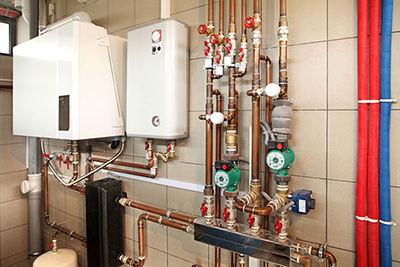
In addition to one-pipe and two-pipe wiring it is also possible to use collector.
In this case, collectors are installed on the supply and return lines - pipes with branches for each radiator.
Thus, each battery is included in its own circuit, which allows for even more uniform heat distribution, individual control and a reduction in the diameter of the supply pipeline.
Along with this, the cost of pipeline materials increases, which can significantly affect the final cost of the system.
Obvious disadvantage forced circulation systems - energy dependence: without electricity, its operation will stop. Therefore, it is necessary to either provide backup power, or combine this system with natural circulation, then when the pump is turned off, it will continue to work, although not as efficiently.
Gas in a private 2-storey house
The main element is a gas boiler. In it, with the help of an ignition system the fuel ignites in the burner and through the heat exchanger is transferred to water. The boiler operates on natural or liquefied gas.
If there is a gas main in a populated area, this type of heating is often the most cost-effective option due to cheapness of "blue fuel". Liquefied gas is used where there is no main connection and is stored in a tank (gas tank). The price of liquefied gas is significantly higher.
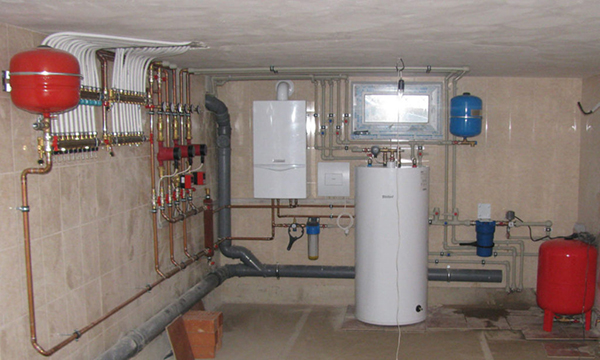
Photo 2. Gas double-circuit floor-standing boiler in a semi-basement room, operating on liquefied propane.
Gas heating boilers are somewhat more complex than solid fuel or electric boilers, and they are divided according to the following features:
- single-circuit or dual-circuit: the first one provides only heating, the second one provides parallel heating of water in the water supply system;
- with natural or turbocharged traction: the latter is more efficient and powerful;
- wall or floor: the first ones are more compact, but are limited in power and cannot provide heating for large buildings;
- with closed or open combustion chamber: the first ones have a higher efficiency, but require a constant power supply;
- convection and condensation: Newer condensing ones have higher efficiency, but the price is also higher.
The installation of a gas boiler in Russia is strictly regulated and must be carried out in accordance with SNiP standards. It is only possible in a separate firebox on the basement or first floor, or in the kitchen. The volume of the firebox is not less than 7.5 m3In addition, it must be equipped with adequate ventilation.
Prices for gas boilers vary widely. For a house with an area of 150–200 m2 power 20 kW, such a unit will cost in 35-60 thousand rubles.
Electrical
In case of electric heating, the heat source is electric boiler. Consists of a heating device, a heat exchanger and a control unit.
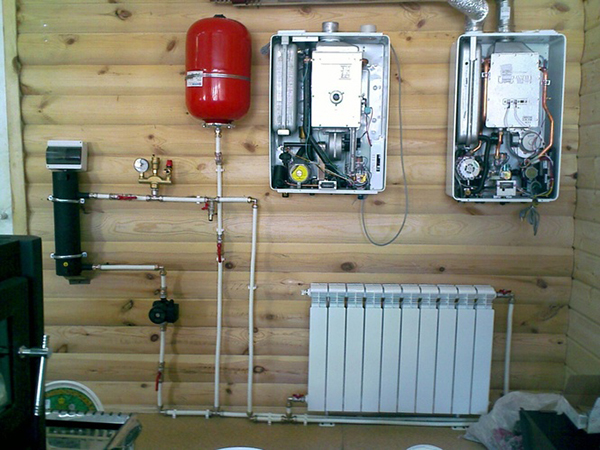
Photo 3. Electric wall-mounted boiler with heat exchanger and control unit, does not require installation of air vent.
According to the operating principle, the following are distinguished: the following types boilers:
- Heating elements: The heating of the coolant is carried out by heating elements similar to those installed in domestic water heaters.
- Film: similar to the first type, but instead of heating elements, a thin coating (usually made of tungsten) is used, which transfers the coolant more efficiently and quickly.
- Electrode: The heat carrier is heated by passing current through it (ionization), which significantly increases efficiency, but requires special water preparation.
An electric boiler is preferable in the absence of gasification or low electricity tariffs. The unit itself is simpler than a gas or solid fuel unit, and does not require the installation of air ducts or gas infrastructure, which reduces installation costs.
Attention! When choosing an electric boiler, you need to take into account that devices with a power greater than 12 kW require a three-phase power supply of 380 V. The connection of which is thought out in advance before the design and purchase of the system.
The cost of an electric boiler depends on its power. Prices vary in the range from 5 to 100 thousand rubles. Dividing the total area of the building by 10 — the required boiler power is calculated. For example, to heat a house with an area of 180 m2, you will need power 18 kWSuch decisions are worth it. 40–50 thousand rubles.
Air
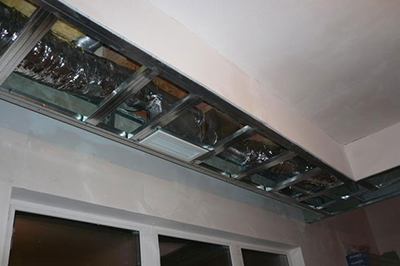
Using air allows you to avoid many problems inherent in water systems: leaks, corrosion, the risk of freezing.
Duct heater (heater) heats the air, which is then supplied to the rooms through air ducts. Thus, the need for radiators disappears.
Air heating is divided into two types:
- With natural circulation: The heated air flows into the rooms by gravity and, cooling, descends to the heater.
- With forced — to increase the speed of heating of buildings, fans are used to accelerate the air in the pipes.
By location of air ducts:
- Floor: the optimal option, providing natural convection and uniform heating of the entire room.
- Suspended: the air ducts are located under the ceiling, which is often problematic in aesthetic terms for a country house, and uneven heating of the room may also occur.
The cost of such systems for a house of area 100-200 m2 makes up 120–180 thousand rubles.
Solar for a 2-story house
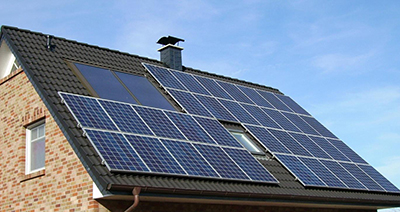
The source of energy is the thermal energy of the sun. Its use is possible in two ways:
- direct heating of the coolant in thermal collectors by the sun's rays;
- use of solar panels for subsequent transfer of energy to the electric boiler.
Types of collectors:
- Open: a system of tubes not protected from external influences, the lowest efficiency and reliability, but also a cost proportionate to them.
- Tubular: consist of vacuum tubes, designed on the principle of a thermos. Inside, a second tube with a special absorbent coating is installed, which ensures high efficiency.
Connection diagram: collectors, usually installed on the roof of a 2-story building, a storage tank with a heat exchanger. The heat exchanger and collector are included in a separate circuit with antifreeze (for operation in winter). Thus, heat from the collector is transferred to the tank, where the main coolant - water - is heated.
Reference! In the central zone of Russia solar energy not enough for year-round operation such systems, so they are often used as an addition to traditional heating systems.
Cost of solar heating solutions - 70–100 thousand rubles. for installation for 10 kW thermal power per day.
Useful video
The video shows how a closed-type gas heating system is created in a private home.
Which option is the most optimal?
The choice of the heating system type is made taking into account external factors. For example, for southern regions, a solar heating system will be justified and economical, for settlements with gasification - a gas system. And with a cheap electricity tariff - an electric boiler.
Besides, It is worth considering the aesthetic aspect: for example, an air system without radiators in some cases suits the interior better.






